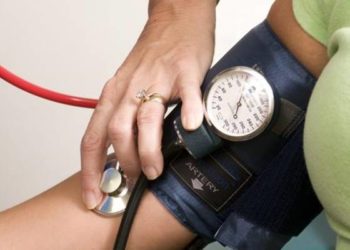Personal health app notifications not effective in improving outcomes and exercise frequency for patients with diabetes
1. A personal health record (PHR) app that used inspirational notifications was not effective in reducing HbA1c levels and daily step count in patients with diabetes compared to control.
Evidence Rating Level: 1 (Excellent)
There is an anticipation that the global prevalence of diabetes along with diabetes-related macrovascular and microvascular complications will increase by the year 2045. Diabetes currently affects 10% of the population, a number that is expected to rise. With the prevalence of the disease, it is important to find ways to mitigate the cost of treatment. One well-studied treatment is regular exercise, which has been shown to decrease mortality in people afflicted. For this study, physical activity was assessed by measuring the step count by using a personal health record (PHR) app. While all participants used the application, the intervention group would further receive text messages encouraging more steps based on baseline activity levels. To assess the effectiveness of the PHR, a randomized controlled trial divided participants into the control group who used the app, and the intervention group that used the app and received text messages. The trial began with a run-in period of one week, which was then followed by a 12-week randomized treatment period, and then a 12-week extension period. To best understand the impact of physical activity on type 2 diabetes, the change in daily step count in both groups was assessed as the primary outcome. The secondary outcomes measured mean daily step count, mean HbA1c levels, fasting glucose levels, body weight, physical activity, low-density lipoprotein (LDL) cholesterol, high-density lipoprotein (HDL) cholesterol, and triglycerides, all of which were measured at weeks 12 and 24. A total of 200 participants were split into two groups, with 62 (93.9%) assigned to the control and 118 (88.1%) assigned to the intervention group. There was no significant change in the daily step count between the two groups (P = 0.365). For participants that had a baseline step count < 7500 steps per day, the change in step count at the 12-week mark was larger in the intervention group (1319 ± 3020) than in the control group (-139 ± 2309) (P = 0.009). At the same 12-week mark, the HbA1c was significantly lower in the intervention group (6.7 ± 0.5% compared to the control group (6.9 ± 0.6%, P = 0.041). However, when the groups were compared at the 24-week mark, the changes were significant but comparable between the groups. In the intervention group, a decrease of HbA1c was greater for the patients with baseline HbA1c ≥ 7.5% (-0.81 ± 0.84%) compared to those with a baseline HbA1c < 7.5% (-0.22 ± 0.39%) (P for interaction = 0.014). Participants in the intervention group experienced significant weight loss at weeks 12 and 24 compared to baseline (-1.07 kg and -1.46 kg, all P < 0.001). Whereas participants in the control group only had significant weight loss at week 24 (-1.05 kg, P = 0.03). Overall, the inspirational notifications did not increase step count, and when compared to the control group saw similar changes in HbA1c levels.
Click to read the study in BMC Medicine
Image: PD
©2024 2 Minute Medicine, Inc. All rights reserved. No works may be reproduced without expressed written consent from 2 Minute Medicine, Inc. Inquire about licensing here. No article should be construed as medical advice and is not intended as such by the authors or by 2 Minute Medicine, Inc.







